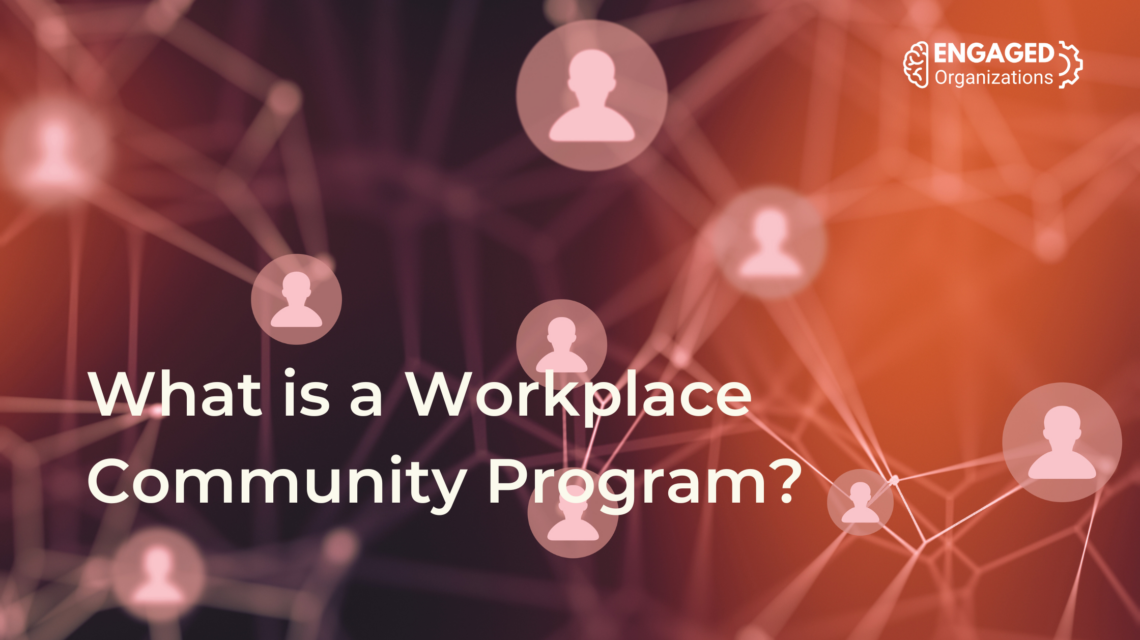Workplace Community Programs Deliver Transparency, Connections, and Belonging
A workplace community program is responsible for building and managing communities within an organization, such as employee resource groups, diversity and inclusion groups, learning communities, communities of practice, affinity groups, and innovation networks.
Community networks provide compelling benefits to organizations in a range of areas including communications efficiency, culture change, speed of innovation, productivity, and employee retention.

The primary responsibilities of enterprise community program teams are:
- Designing and adapting governance for the enterprise ecosystem and its communities: this involves collaboration with leaders across the organization.
- Developing community strategy and management standards: this includes creating guidelines, frameworks, training, and toolkits for community leaders.
- Training and coaching community leaders who are responsible for the tactical facilitation of communities.
- Managing core infrastructure: this includes defining requirements, vendor management, updates, application training, and resources.
- Program and budget management: this is stakeholder collaboration, budgeting, managing funds, and securing resources.
- Measuring and reporting on the community ecosystem including engagement levels, participation rates, behavior shifts, sentiment, and business impact.
Workplace community teams play a crucial role in fostering a sense of community, connection, inclusion, and engagement.
Lack of Workplace Community Expertise Creates Confusion
Today there are tens of thousands of people in the field of community management most of whom work with customer communities. Workplace or enterprise community roles have existed for over a decade but have not gained momentum for a few reasons:
- There is no one obvious place for community teams in most organizational structures.
- A dizzying array of overlapping community initiatives across many functional areas.
- Slack and Microsoft Teams adoption overshadowed communities because it aligned with existing governance structures.
While the move to remote and hybrid work has vastly increased the need for workplace community programs because they are a unified, accessible place where employees can find expertise and connect across silos, it is still not clear to most organizations what they are, where they fit, or where to start.
Workplace Community Expertise Exists
 I have done over a decade of annual research on workplace community programs and consulted, trained, and advised a wide range of international organizations. There is a diverse group of organizations with workplace community networks and many professionals with years or decades of expertise.
I have done over a decade of annual research on workplace community programs and consulted, trained, and advised a wide range of international organizations. There is a diverse group of organizations with workplace community networks and many professionals with years or decades of expertise.
Much of that expertise is highlighted in the Communities in the Digital Workplace report, which includes data on how workplace community programs mature, their size, business value, and employee benefits. For me the employee empowerment and belonging generated by these workplace community programs is one of the most exciting findings.
There is still too little awareness and expertise about workplace community programs in mainstream HR, Communications, L&D, and innovation industry groups but it does exist and can provide a wealth of lessons that have already been learned.
The Range of Community Job Titles is Wild
While organizations are hiring, the title of roles is as dizzying. It is hard to find these jobs and it is hard to hire for them with so much variation.
Below are just a few examples:
- VP, Internal Community Development
- Sr Manager, Workplace Strategy
- Director Innovation Ecosystem Activation
- Digital Employee Experience Manager
- Digital Workplace Product Owner
- Employee Experience and Inclusion Manager
Many of these titles are oriented to the functional group in which they sit. There is a valid conversation about whether there should be a centralized team responsible for the entire ecosystem or whether the role should be decentralized they way it often is today. Each organizations will have a different answer but the standard pros and cons apply. Regardless some consensus on titles, skills, and responsibilities would help everyone.
What's in a Name?
I am an analyst, consultant, trainer, and advisor that has followed this market for close to 15 years. I founded The Community Roundtable in 2009 because I felt that online community managers were learning things that all managers would need to know as communications became more networked. That hypothesis proved to be correct but it is not yet clear to organizations how to integrate those skills.
Without more alignment on how companies are defining, hiring, and training for these skills, organizations will continue to struggle with that rapidly changing and accelerating information environment – and that will impact their success, in innovating, selling, and retaining customers and employees.
Where do community building skills exist in your organization? In what roles?
How do you talk about it? What title(s) do you prefer? Where in the organization should this skill set live?
I have lots of questions. There is no one answer but I am curious how other people think about the way an organization’s communities are or should be cultivated. Are you?



